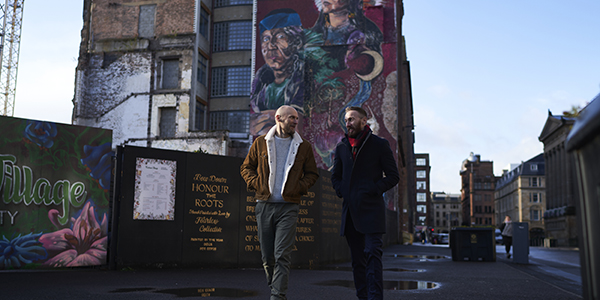As part of the development of Glasgow City Innovation District, the University of Strathclyde is leading an ambitious project to a 100% renewable climate neutral and climate resilient area within the district. The project aims to integrate heat, power, transport, climate adaptation and wellbeing solutions that will benefit everyone in the area of the Innovation District.
Roddy Yarr, Executive Lead Sustainability at Strathclyde, said:
"We call this a 'whole-systems' approach. It means that we are bringing together a range of innovative measures and interventions that make use of our local natural and physical resources in this part of the city to enable a large-scale transition to a more sustainable and climate ready Innovation District."
"We are working with Glasgow City Council to bring climate friendly solutions into existing and planned urban development plans. These solutions will bring health and wellbeing benefits for citizens living and working in the local area. For example, we will be tapping into the energy potential of the River Clyde and using technology to make that heat available to businesses, residents and large energy users in the district."
Glasgow City Innovation District is based in the east of the city centre, around Merchant City and the High Street, the original birthplace of Glasgow.
It extends from Cathedral Street, down High Street to the River Clyde, a huge river catchment of 3,200km2 with 1GW of heat potential. That’s enough energy potential to sustainably heat all the homes and businesses in the Innovation District.
The High Street Climate Corridor runs from the bottom of the Saltmarket at the River Clyde, to Glasgow Royal Infirmary at Castle Street. Three heat pumps will be situated in the River Clyde, at Clyde Street providing 1GW of heat.
A report has been completed by Howley Energy & Water Ltd to provide initial high-level commentary towards the development of a Water Source Heat Pump scheme (WSHP). The river has large structures in place that helpfully enable elements of the heat pump infrastructure to be installed and next steps have now been identified and will be funded by Rockefeller Foundation.
The corridor runs through Glasgow City Innovation District, past the University of Strathclyde.
We're working to bring climate-friendly solutions into urban development plans. These solutions will bring health and wellbeing benefits for citizens living and working in the local area.
The district’s streets will act as climate and energy corridors that will help the local community to benefit from low carbon heat, power, improved transport, cycling and walking options which will all help provide space for people to move safely and more easily. The project will improve air quality in the centre of Glasgow. A focus on greening the space and nature being allowed to flourish is part of the work.
Strathclyde has a number of climate action projects underway on its campus in the city centre, including the planned development of a new Technology and Innovation Centre (TIC) Zone which will be designed and built to Passivhaus standard, the leading international low energy design standard. The new development will build on the success of Strathclyde’s first Technology and Innovation Centre and will house an increasing number of innovative businesses that wish to locate and grow within the area.
The creation of the Climate Neutral District within Glasgow City Innovation District is a collaboration between the University of Strathclyde and Glasgow City Council with significant input from Scottish Enterprise, Scottish Water Horizons, Zero Waste Scotland, Scottish Power Energy Networks, Local Energy Scotland, Clyde Gateway, Climate Ready Clyde, Sustrans, Wheatley Group, SALIX and NHS Greater Glasgow and Clyde.
It is one of ten climate neutral innovation district projects being delivered by the University of Strathclyde in close collaboration with private and public sector partners across the West of Scotland as part of the University’s Climate Change and Social Responsibility policy.
